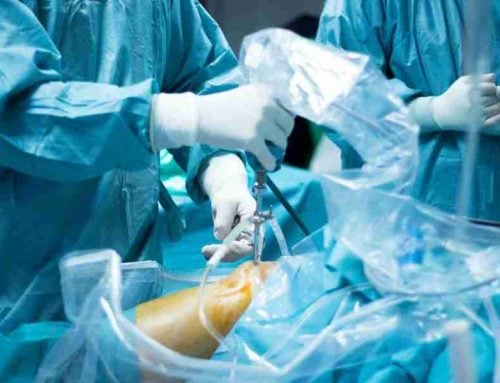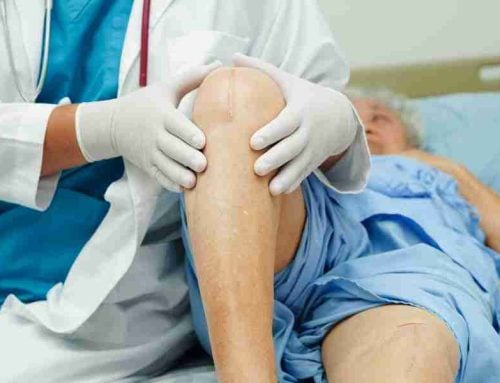Introduction
Hip and Knee Arthroplasty, more commonly known as hip and knee replacement surgery, is a widely performed procedure that offers a new lease on life for individuals grappling with severe knee conditions, including arthritis. This surgery can significantly improve quality of life by relieving pain and enhancing mobility and function.
However, it’s important to understand that achieving these benefits isn’t just about the surgery. The recovery and rehabilitation following the surgery are crucial to the overall success of your joint replacement. How well and quickly you recover can largely influence your ability to regain strength, motion, and independence.
In this blog post, we aim to provide practical tips and insights to help you navigate your recovery journey more effectively. We’ll delve into various aspects of the recovery process, from choosing the right orthopedic surgeon and understanding modern techniques in knee arthroplasty to essential pre- and post-surgery care, physical rehabilitation, lifestyle adjustments for recovery, and how to avoid complications.
Whether you’re planning to undergo or have already had the surgery and are in the recovery phase, this guide can offer valuable information to help you in your journey toward a faster and smoother recovery.

Choosing an Orthopedic Surgeon
Selecting the right orthopedic surgeon for your joint replacement is one of the first and most crucial decisions you’ll make in your journey towards recovery. Your surgeon isn’t just the person who performs your operation; they’re your guide through the entire process, from pre-surgery preparation to post-surgery rehabilitation. So, it’s essential to choose someone with whom you feel comfortable, confident and can communicate openly.
Here are some factors to consider when choosing your surgeon:
Experience and Expertise: The surgeon’s level of experience and expertise in performing hip and knee replacement is critical. The more surgeries they’ve done, the more adept they are likely to be at handling different scenarios and complications. Don’t hesitate to ask about their experience, their success and complication rates, and their specialized training in joint replacement.
Communication: Your surgeon should be someone who encourages your questions, explains things in understandable terms, and makes you feel heard. This is crucial in establishing a trusting patient-doctor relationship.
Follow-up Care: Ask about the surgeon’s protocol for follow-up care. This includes their approach to pain management, physical therapy, and dealing with potential complications.
Patient Reviews and Testimonials: Patient reviews, and testimonials can provide valuable insights into a surgeon’s practice from the patient’s perspective. They can give you a sense of the surgeon’s bedside manner, staff professionalism, and the quality of care provided. While individual experiences can vary, consistent positive or negative reviews can give you a general idea of what to expect.
Use of Advanced Techniques and Technologies: The field of orthopedics is constantly evolving, with new techniques and technologies being developed to improve patient outcomes. Ask if the surgeon is updated with these advancements. For instance, do they use computer-assisted surgery or robotic-assisted techniques? Are they familiar with modern pain management protocols? Their willingness to adopt and adapt to new advancements can be a positive sign.
Insurance Coverage: While not directly related to the quality of care, it’s important to understand what your insurance covers. Does the surgeon accept your health insurance? If not, what would the out-of-pocket costs be? Understanding these financial aspects can help you avoid any unpleasant surprises.
Remember, you can seek second or third opinions if unsure about your initial choice. The key is to find a surgeon you trust and feel comfortable with, as this can significantly influence your recovery journey.
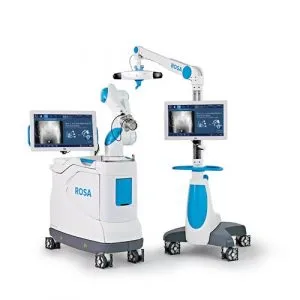
Understanding Modern Techniques in Hip and Knee Arthroplasty
As medical technology advances, so do the techniques used in hip and knee replacement. Surgeons today have a range of innovative tools and procedures at their disposal to improve surgical outcomes, reduce pain, speed up recovery, and even make same-day joint replacement a possibility for some patients. Here’s an overview of some of these cutting-edge techniques:
Tourniquet-less Procedures: Traditionally, a tourniquet is used during knee replacement to restrict blood flow to the area, making the surgery easier to perform. However, some surgeons now use tourniquet-less techniques, which can reduce postoperative pain and swelling, speed up rehabilitation, and potentially improve the patient’s overall satisfaction.
Robotic-Assisted Surgery: Robotic systems can assist surgeons in achieving better precision and alignment during the procedure, leading to improved function and longevity of knee replacement. These systems provide real-time feedback and allow the surgeon to make fine adjustments that are impossible with traditional techniques.
Long-Lasting Nerve Blocks and Non-Opioid Pain Relief Methods: Pain management after joint replacement is a critical aspect of patient care. Long-lasting nerve blocks can provide extended pain relief after the surgery. In addition, non-opioid pain relief methods, such as the iovera system, which uses cold therapy to block pain signals from peripheral nerves temporarily, are being increasingly used. These methods can effectively manage pain while reducing the risk of opioid-related side effects and dependencies.
Multimodal Pain Medication Protocols: These protocols use a combination of medications that work in various ways to control pain. By attacking pain from different angles, these protocols can provide effective pain relief while minimizing the use of opioids.
Same-Day Joint Replacement: For some patients, it may be possible to have the surgery and return home on the same day. This approach can offer comfort and cost benefits, although it requires careful patient selection and preparation.
Remember, not all techniques are suitable for all patients, and the best approach depends on various factors, including your overall health, your surgeon’s expertise, and your personal preferences and expectations. Discuss these options with your surgeon to understand which might be the most appropriate for your situation.
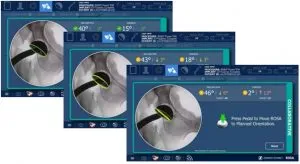
Pre-Surgery Preparation
Preparing for joint replacement involves more than just marking a date on your calendar. It’s a process that requires both physical and mental preparation to ensure you are in the best possible condition for the surgery and the recovery that follows. Here are some key areas to focus on:
Understanding the Procedure: Knowledge is power, which certainly applies to your joint replacement. Understanding the procedure, what to expect during recovery, and potential complications will not only help alleviate anxiety but also enable you to play an active role in your care. Don’t hesitate to ask your surgeon any questions you might have.
Physical Health: It’s important to be in the best physical condition possible before your surgery. This might involve losing weight if you’re overweight, controlling any existing conditions such as diabetes or high blood pressure, and quitting smoking if you’re a smoker, as smoking can slow down the healing process.
Strengthening Exercises: Participating in prehabilitation, a program of physical exercises to strengthen your muscles before surgery, can help speed up your recovery. Ask your surgeon or physical therapist about exercises you can do at home.
Mental and Emotional Preparation: It’s normal to feel anxious before a major surgery. Techniques such as deep breathing, meditation, and visualization can help manage pre-surgery anxiety. Speaking to a mental health professional can also be beneficial.
Home Preparation: Consider the changes you might need to make in your home to accommodate your recovery needs. This could include setting up a comfortable recovery area, arranging for help with meals and chores, or modifying your bathroom for easier access.
Nutrition: Good nutrition is key for healing. Your doctor or a nutritionist can provide guidance on a healthy diet to follow before and after your surgery.
Remember, your healthcare team is there to support you in this journey. Don’t hesitate to contact them with any concerns or questions you might have during your pre-surgery preparation.
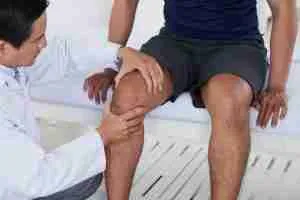
Post-Surgery Care
The immediate post-surgery period is a crucial time in your recovery journey from hip and knee arthroplasty. Proper care can significantly improve your comfort levels, speed your recovery, and prevent potential complications. Here are some key aspects of post-surgery care:
Pain Management: Managing pain effectively is essential for your comfort and for facilitating physical therapy. Your pain management plan may include a combination of medications, nerve blocks, and non-pharmacological methods. It’s important to communicate with your healthcare team about your pain levels so they can adjust your pain management plan as needed.
Wound Care and Hygiene: Keeping the surgical area clean and dry helps prevent infections. You’ll receive specific instructions on how to care for your wound before you leave the hospital. This may include advice on bathing, changing dressings, and spotting signs of infection such as redness, swelling, or increased pain at the surgical site.
Mobilization and Physical Therapy: Early mobilization and physical therapy are key to restoring function in your knee. Your physical therapist will guide you through exercises to improve strength, flexibility, and range of motion. It’s crucial to adhere to your physical therapy schedule and do any recommended exercises at home.
Watch for Signs of Complications: While complications are not common, it’s important to be aware of potential signs, including severe pain, swelling, redness, or drainage at the surgical site, fever, and sudden or increasing difficulty moving your knee. If you notice any of these signs, contact your healthcare team immediately.
Nutrition and Hydration: Eating a balanced diet rich in protein, vitamins, and minerals can aid your body’s healing process. Staying well-hydrated is also important, especially if you take certain medications that can cause dehydration.
Rest and Sleep: Adequate and good quality sleep are essential for healing and recovery. Try to maintain a regular sleep schedule and create a restful environment for sleep.
Remember, everyone’s recovery journey is unique, and it’s normal to have good days and bad days. Be patient with yourself, listen to your body, and communicate openly with your healthcare team about any concerns.

Physical Rehabilitation
Physical rehabilitation following hip and knee replacement is a critical component of the recovery process. It is designed to help you regain strength, mobility, and function in your knee and plays a pivotal role in determining the overall success of your surgery. Here are some key points to consider:
The Role of Physical Therapy: Physical therapy typically begins soon after surgery, often within 24 hours. The goal of these initial sessions is to help you regain basic mobility, such as getting out of bed, sitting, standing, and walking with a walker or crutches. Over time, the exercises become more challenging to help improve your strength, balance, flexibility, and endurance.
Typical Exercises and Milestones: Your physical therapist will design a program tailored to your needs and recovery progress. This may include leg lifts, knee bends, and walking exercises. Throughout your recovery, your therapist will set various milestones, such as bending your knee to a certain degree, walking a distance, or climbing stairs. Achieving these goals can be a great morale booster and a sign of progress.
Importance of Home Exercises: In addition to your scheduled therapy sessions, it’s important to perform exercises at home as instructed by your therapist. These exercises help maintain the progress made during therapy sessions and speed up your recovery.
Managing Pain during Rehabilitation: It’s normal to experience some discomfort during physical therapy. However, if the pain is severe or lasting, it’s important to communicate this to your physical therapist, who can adjust your program as needed.
Long-term Rehabilitation Goals: The ultimate goal of physical rehabilitation is to help you return to your normal activities and enjoy a better quality of life. This doesn’t happen overnight and requires patience and perseverance. Remember, everyone recovers at their own pace, so it’s important not to compare your progress with others.
Use Assistive Devices as Needed: In the early stages of recovery, assistive devices like walkers, canes, or crutches can provide extra support and stability as you regain strength and confidence in moving around.
Leverage Technology – MyMobility App: Zimmer Biomet’s MyMobility app is a digital care management platform that uses the Apple Watch and iPhone to provide support and guidance throughout the patient’s surgical journey, including the recovery phase. The MyMobility app and the Apple Watch work in conjunction to provide continuous data and patient-reported feedback to help facilitate care, outcomes, and satisfaction during your surgical preparation and recovery1.
The app provides numerous features, including:
- Messaging: The app allows for messaging by text, video, or picture to support the patient experience and reduce the potential costs of unnecessary visits1.
- Patient Education: It provides patient-friendly procedural education, answers to commonly asked questions, and exercises based on an individual treatment protocol1.
- Gait Monitoring: The app can alert when a hip or knee replacement patient’s walking speed is slower than expected relative to their surgery date or if they have had a significant decrease in their walking speed. This can help identify patients who may not be recovering as expected1.
- Data Collection: MyMobility collects and monitors data such as patient steps, flights of stairs climbed, stand hours, exercise completion, and range of motion. This data not only helps track your progress but also provides insights that may help optimize your recovery1.
- Heart Rate Monitoring: The app also collects data related to heart rate, including average resting heart rate, average walking heart rate, heart rate variability, and VO2 max. This information can help monitor your overall health and fitness during recovery1.
Physical rehabilitation can be challenging, but it’s an essential part of your recovery. Stay motivated, be patient with yourself, and celebrate your progress, no matter how small.

Lifestyle Adjustments for Recovery
Dietary Considerations
Good nutrition is critical to healing after Total Knee Arthroplasty. A well-balanced diet provides the nutrients your body needs to mend tissues and fight infection. Here are some dietary tips to aid your recovery:
- Protein: Include good protein sources in your diet to aid in tissue repair. Lean meats, fish, eggs, dairy products, beans, and nuts are excellent protein sources.
- Vitamins and Minerals: Foods rich in vitamins and minerals, especially vitamin C, vitamin D, calcium, and iron, can aid in bone health and wound healing. Fruits, vegetables, whole grains, lean proteins, and dairy products contain these essential nutrients.
- Hydration: Staying hydrated is also crucial to your recovery. Water helps transport nutrients in the blood necessary for cell health and growth. Aim to drink at least eight glasses of water each day.
- Nutritional Supplements: MEND is a nutritional supplement designed to enhance muscle health and support the body’s natural healing processes. It includes a blend of essential amino acids, vitamins, and other nutrients that support muscle protein synthesis, combat inflammation, and aid in tissue repair and recovery.
- Importance of Rest and Sleep
Rest and sleep are as important as physical therapy in your recovery process. When you sleep, your body works to repair and rebuild damaged tissues. Ensure you get enough sleep each night and take short rest periods during the day if needed.
Here are some tips to improve your sleep during recovery:
- Create a Comfortable Sleep Environment: Use pillows to support your surgical leg. Your healthcare provider can guide you on the best sleeping positions post-surgery.
- Establish a Regular Sleep Schedule: Try to go to bed and wake up at the same time each day to regulate your body’s clock and improve the quality of your sleep.
- Limit Naps During the Day: If you need to nap, keep it short. Long daytime naps can interfere with nighttime sleep.
Coping with Temporary Limited Mobility
It’s crucial to understand that you will experience some mobility limitations during the initial weeks after your surgery. Here are some strategies to manage this period effectively:
- Home Preparation: Prior to your surgery, arrange your living area to accommodate your mobility needs. This may include securing rugs, clearing paths, installing safety bars in the bathroom, and setting up a sleeping area on the ground floor if stairs are a concern.
- Assistive Devices: Tools like crutches, walkers, and canes can help you move around safely. Your physical therapist will guide you on the correct use of these devices.
- Patience and Positivity: It’s normal to feel frustrated sometimes, but maintaining a positive mindset can make a big difference in your recovery. Celebrate small victories and remember that each day brings you one step closer to regaining mobility.
These lifestyle adjustments, along with following your doctor’s instructions and completing your physical therapy, will set you on the path to a faster and smoother recovery after your Total Knee Arthroplasty.

How to Avoid Complications
Signs of Potential Complications
While joint replacements are generally safe, like any surgery, it carries the risk of complications. Early detection can lead to prompt treatment and prevent further issues. Here are signs to watch for:
- Infection: Signs include persistent fever, chills, redness, swelling, or drainage from the surgical site.
- Blood Clots: Symptoms may include swelling, pain or tenderness not related to the surgical site, redness, or warmth in the swollen or painful area, or new onset of shortness of breath or chest pain.
- Stiffness or Instability: Difficulty moving the knee, extreme discomfort during physical therapy, or feeling like the knee is unstable can also indicate complications.
Steps to Take When Complications Are Suspected
If you notice any signs of potential complications, it’s crucial to act quickly:
- Contact Your Healthcare Provider: This should be your first step. They can guide you on what to do next based on your symptoms.
- Follow Your Healthcare Provider’s Instructions: This may include coming in for an examination, adjusting your medications, or in some cases, hospitalization.
When to Seek Medical Help
Seek immediate medical attention if you experience:
- A high fever (over 101°F)
- Severe pain not relieved by your medications.
- Chest pain, difficulty breathing, or sudden shortness of breath.
- Signs of a possible blood clot, such as sudden swelling, pain, or warmth in your leg or arm
Prevention Strategies
Prevention is always better than treatment. Here are some steps you can take to reduce your risk of complications:
- Follow Your Healthcare Provider’s Instructions: This includes taking prescribed medications, performing exercises as instructed, and adhering to dietary guidelines.
- Keep Your Follow-up Appointments: Regular check-ups allow your healthcare provider to monitor your progress and catch any potential issues early.
- Maintain Good Hygiene: Keep the wound clean and dry to prevent infections.
- Stay Active Within Your Limits: Regular, gentle movement can help prevent blood clots and aid in your overall recovery.
By being vigilant and proactive, you can significantly reduce the risk of complications and promote a faster, smoother recovery.
Conclusion
Going through a hip or knee replacement can be a challenging experience, but with the right knowledge, preparation, and care, you can set yourself on a path for a speedy recovery. From choosing the right orthopedic surgeon, understanding modern surgical techniques to make necessary lifestyle adjustments, and watching out for potential complications, each step plays a vital role in your healing journey.
Remember that your healthcare provider is your most reliable source of information and guidance. Don’t hesitate to contact them with any questions or concerns.
Stay consistent with your prescribed physical therapy exercises, maintain a balanced diet, supplement, rest adequately, and keep a positive mindset. These combined factors will help you regain mobility and return to regular activities faster.
This journey may have challenges, but every step brings you closer to recovery. You are not alone on this journey. There are numerous resources and support systems available to assist you, and many others have successfully walked this path before you.
Lastly, we encourage you to share your experiences or ask any questions you might have in the comments section below. By doing so, not only will you be helping yourself but also others who might be going through a similar journey.
Thank you for taking the time to read this blog post. We wish you a speedy and smooth recovery.

